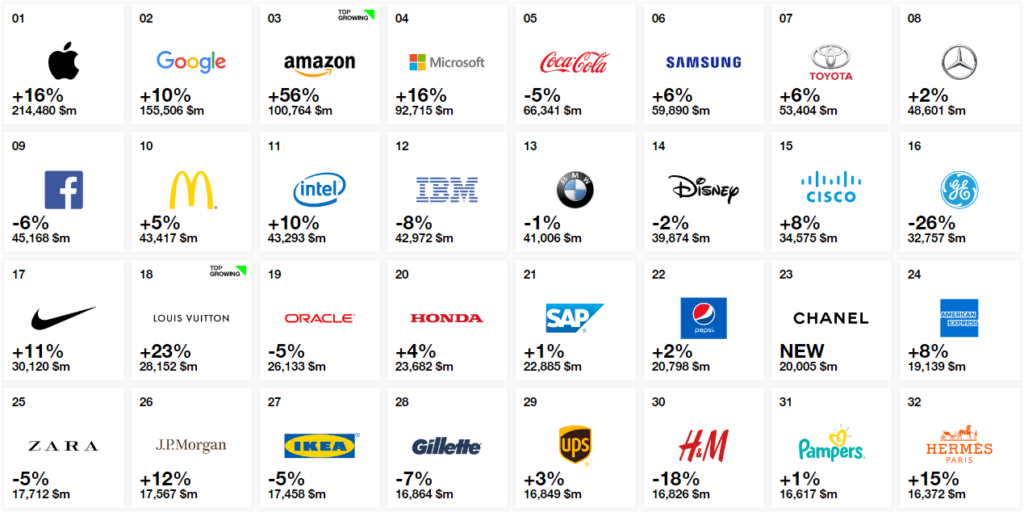International Brand Strategy: Build a Global Brand
Developing an effective international brand strategy is crucial for companies looking to expand their reach into new markets abroad. With the right approach, brands can resonate with consumers across cultures and countries to drive business growth on a global scale. However, international brand strategy requires careful planning and consideration of critical factors from marketing to localisation.
Table of Contents
Defining International Brand Strategy
International brand strategy refers to the plans and tactics brands use to build awareness and connect with consumers in markets outside their home countries. The goal is to craft a global image while appealing to local tastes and preferences.
Key Elements
An international brand strategy typically focuses on:
- Positioning: Determining how to differentiate and market your brand proposition to international audiences.
- Messaging: Crafting brand messaging that translates across languages and cultures.
- Localisation: Adapting your brand identity, products, and messaging for local consumer expectations.
- Expansion: Prioritising future growth opportunities and new country launches.
Approach
Developing a successful international brand approach requires the following:
- Researching target foreign markets
- Segmenting consumer groups
- Identifying optimal entry strategies per country
- Launching localised branding and products
- Measuring performance across markets
With the right strategy, companies can build international brand equity and recognition while appealing to cultural nuances.
Global Branding Trends and Opportunities

The global marketplace continues to present exciting expansion opportunities for brands. As technology connects consumers worldwide, global branding has taken on increased importance.
Global Consumer Culture
The emergence of a “global consumer culture” has led to more universal customer needs and tastes. Consumers – especially young people in developing nations – now have more in common with counterparts abroad. Many desire foreign brands as status symbols.
Borderless Digital Media
Digital media also allows international brands to reach consumers without geographic constraints. Social platforms and ecommerce provide new avenues for brands to connect with target groups globally.
Emerging Middle Classes
Rising incomes in developing markets also fuel demand for foreign goods. Emerging middle-class consumer sectors in China, India, and Latin America represent major growth markets.
With the right messaging and positioning, brands can achieve international name recognition and loyalty on par with local favourites.
Critical Challenges in International Branding

However, various obstacles can derail international brand strategy if not appropriately addressed:
Navigating Cultural Differences
Failing to understand local cultural norms and taboos poses significant risks. Brand messaging and products should align with local tastes regarding colours, images, symbols, words, etc. Different cultural values also impact consumer motivations.
Competition from Local Incumbents
Entrenched domestic brands have inherent advantages in their home turfs. International players need strong differentiation and positioning to drive market share against local favourites.
Operational Complexities Across Markets
Regulations, supply chains, partnerships and language complicate international executions. Brands must customise business operations across different countries.
Consistency Across Markets
Despite localisation efforts, brands must uphold consistent identity and experiences across territories. Achieving the optimal balance between standardisation and localisation is imperative.
These hurdles underscore the need for in-depth planning and research when devising international brand blueprints.
International Brand Positioning Strategies

How brands choose to position themselves in the global marketplace is critical. While many basic principles of solid branding apply universally, positioning requires international nuances around differentiation and relevance.
Lead with Brand Purpose
In an interconnected world, brands leading with social causes and conscious values gain international appeal, especially among younger demographics. Purpose-driven branding builds affinity across cultures.
Balance Global and Local Identities
Brands must shape global identities that still feel locally relevant in target countries. This requires balancing universal and market-specific elements in positioning and messaging.
Spotlight National Heritage (When Strategic)
For some categories, showcasing domestic heritage can differentiate brands abroad while commanding price premiums. However, this positioning also risks being seen as overly foreign by locals.
Localise Products and Experiences
Adapting core products to local tastes, environments and usage occasions makes brands more relatable. Localised experiences also make engagement more meaningful.
Blend Global and Local Imagery
Brand advertising should feature a mix of international talent, locales, and local faces and settings. This “glocal” approach blends global appeal with local representation.
We are getting a positioning suitable to form the foundation for resonance across markets. Customisation averts disconnects between brand identity and local expectations.
Global Brand Management Models

When building international brand strategy, companies choose from established frameworks based on standardisation versus localisation:
Globalised Model
Globalised brands use near identical positioning, branding and messaging worldwide, capitalising on economies of scale. Decisions are centralised through headquarters. Think Coca-Cola.
Pros: Efficiency, consistency, global recognition
Cons: Omits local nuances, insensitive missteps
Localised Model
Localised branding cedes autonomy to country offices for customisation based on local insights. Brand relevance trumps global integration. Think fast food.
Pros: Locally resonant, nimble responses
Cons: Fragmentation, high complexity
Glocal Model
The “glocal” approach blends consistent global brand equity with localised adaptations targeting local uniqueness. Think Unilever.
Pros: Brand Unity and local relevance
Cons: Challenging to execute, higher costs
Most brands fall from highly globalised to highly localised approaches depending on product category and strategy. But finding the right balance is critical.
Optimal Entry Strategies by Market Type
Beyond overall positioning, effectively prioritising and sequencing international expansion directly impacts success. Brands take different approaches depending on market profiles and attributes.
Developed Markets
For developed markets like Western Europe, the U.S. or Japan, brands often directly launch or acquire local entities leveraging existing brand recognition and consumer sophistication.
Emerging Markets – Category Leaders
In emerging regions, number-one brands in a given category often enter directly through owned operations or joint ventures (if regulations require). Think soft drinks giants. Leadership brings inherent advantages.
Emerging Markets – Niche Players
However, second-tier brands just launching in developing markets may need to initially enter through partnerships with established local distribution networks already covering hard-to-reach segments.
The optimal combination of entry timing and channel strategy helps set the foundations for future growth market-by-market.
Consumer Research to Inform Localisation

While borderless digital culture creates global uniformity in consumer values and lifestyles, notable market divergences persist. Conducting appropriate research helps international brands decode local nuances.
Quantitative Surveys
Large-scale surveys uncover variances in consumer attitudes, usage behaviour and media habits across target countries. Statistically robust data informs big-picture strategy.
Ethnography Research
Observing consumers in home and retail environments identifies deep cultural insights and local rituals that quantitative data misses. Ethnography illustrates actual behaviours.
| Research Method | Pros | Cons |
| Quantitative Surveys | Statistically reliable, large samples | Shallow motivations, lack of context |
| Ethnography | Reveals cultural nuances and rituals | Small samples, costly |
Brand Position Testing
Testing potential brand positioning themes and messages with local focus groups provides directional input to optimise localised resonance while adhering to global principles.
Rigorous upfront research around the above dimensions can yield invaluable localisation insights without over-reliance on stereotypes. Ongoing consumer monitoring then tracks performance.
Top 10 Global Brand Rankings
While overall business size certainly impacts brand equity, companies focused explicitly on sustained marketing investment and cultivating emotional consumer connections often rise to the top of global brand rankings.
Top 10 Global Brands (2023 Data)
The following brands currently dominate rankings of the most valuable global brands across industries (table below):
| Rank | Brand | Category | Brand Value |
| 1 | Apple | Technology | $502 billion |
| 2 | Microsoft | Technology | $316 billion |
| 3 | Amazon | Internet Retail | $276 billion |
| 4 | Technology | $260 billion | |
| 5 | Samsung | Technology | $91 billion |
| 6 | Toyota | Automotive | $64 billion |
| 7 | Mercedes | Automotive | $61 billion |
| 8 | Coca-Cola | Beverages | $58 billion |
| 9 | Nike | Fashion | $53 billion |
| 10 | BMW | Automotive | $51 billion |
The above global powerhouses all project strong brand identities worldwide while also focusing considerable resources on localising products and messaging market-by-market.
However, innovations and disruptors constantly threaten entrenched category leaders as consumer tastes rapidly evolve. Consistent marketing investment and empathy for local contexts determine staying power.
Bringing it All Together: Brand Strategy Framework
When orchestrating an international brand strategy, the following comprehensive framework covers the central areas requiring focus:
Global Brand Positioning Guidelines
- Core brand identity pillars
- Parameters for adaptation by market
Consumer Segmentation Model
- Common motivations across target groups
- Local segment nuances and insights
Prioritised Country Expansion Plan
- Top growth markets ranked by potential
- Optimal entry strategy per market
Localised Marketing Strategies
- Adapted brand messaging per cultures
- Customised products by region
- Relevant partnerships, media and communications tactics
Performance Benchmarks
- Brand strength metrics by market
- Growth and share targets globally
This structured approach allows the coordination of consistent global brand equity alongside necessary localisation. Regular reviews then ensure strategies stay relevant amid marketplace changes. With upfront commitment and resources against the above pillars, international brand relevance and leadership stand within reach.
Conclusion
An effective international brand strategy ultimately requires understanding regional consumer cultures while crafting an authentic brand purpose that transcends borders. Companies prioritising localisation and still conveying consistent brand identities worldwide stand to gain market share and consumer loyalty across geographies.
With advancements in communications technology and transportation infrastructure continuously transforming the global marketplace, barriers separating once disparate consumer markets fade – opening new expansion opportunities. Though local nuances endure across developed and developing economies, younger generations increasingly share more unified desires, tastes and lifestyles worldwide.
For incumbent international brands, staying atop global category rankings necessitates regularly revisiting regional approaches – doubling down on what resonates in growth markets while pivoting where local relevance falters, for regional brands aiming global, methodical expansion starts with geographies sharing cultural dimensions before advancing to more disparate shores.
With diligent upfront brand positioning backed by ongoing localised executions, national brands can eventually transform into admired icons abroad – surpassing multinational rivals by balancing standardisation with carefully tailored localisation, global branding success beckons.
Global Brand Strategy FAQs
Here are answers to common questions about building international brand strategies:
What are the main benefits of developing global brand equity?
Global brands enjoy advantages in customer recognition and trust worldwide, fueling willingness to pay premium pricing. Global scale also creates cost efficiencies in marketing and product development.
What risks do brands face when expanding into foreign markets?
Potential landmines range from cultural missteps, lack of consumer relevance and intense domestic competition to operational complexities across regulations, partners and languages.
How much localisation is ideal when expanding brands internationally?
While strong global brands project consistency, most also customise 30%-50% of positioning, products and messaging to align with local consumer nuances in priority growth markets.
What role does brand purpose play in global branding strategy today?
In our interconnected world, brands leading with social causes gain international interest and favour, especially among younger demographics. Shared values and beliefs transcend cultures.
How does digital disruption impact global branding approaches?
Digital channels allow consistent global brand interaction but also detailed targeting. However, brands still need physical experiences to drive deep engagement across markets. Omnichannel strategies prevail.
